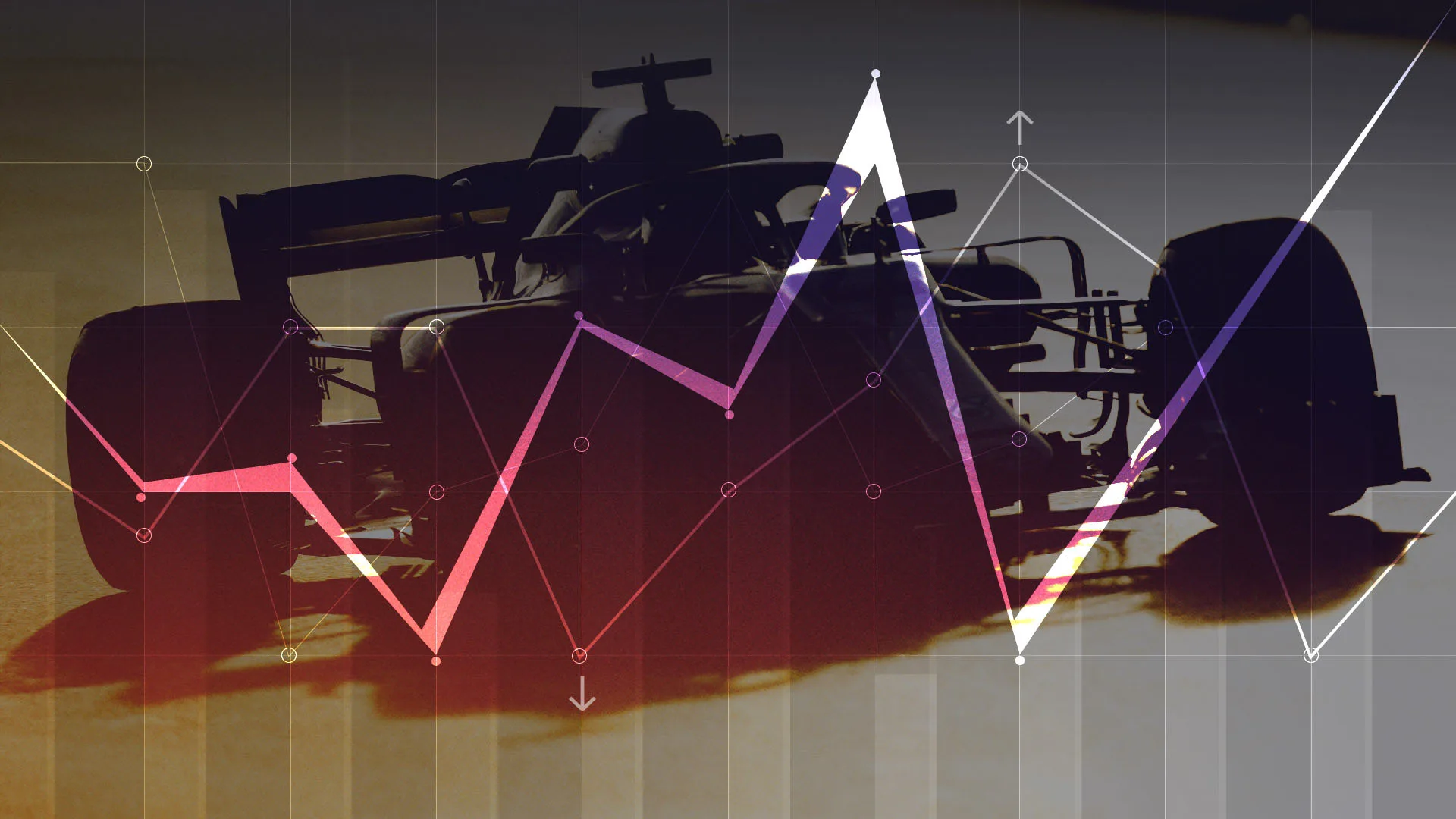After a few days to catch their breath, Formula 1’s 10 teams were back in action at the Circuit de Barcelona-Catalunya on Tuesday with the sole focus of making the most of the final four days of testing before they head Down Under. So who kicked off day one of test two on the front foot? We have a look at the numbers….
McLaren fastest - but Red Bull impress
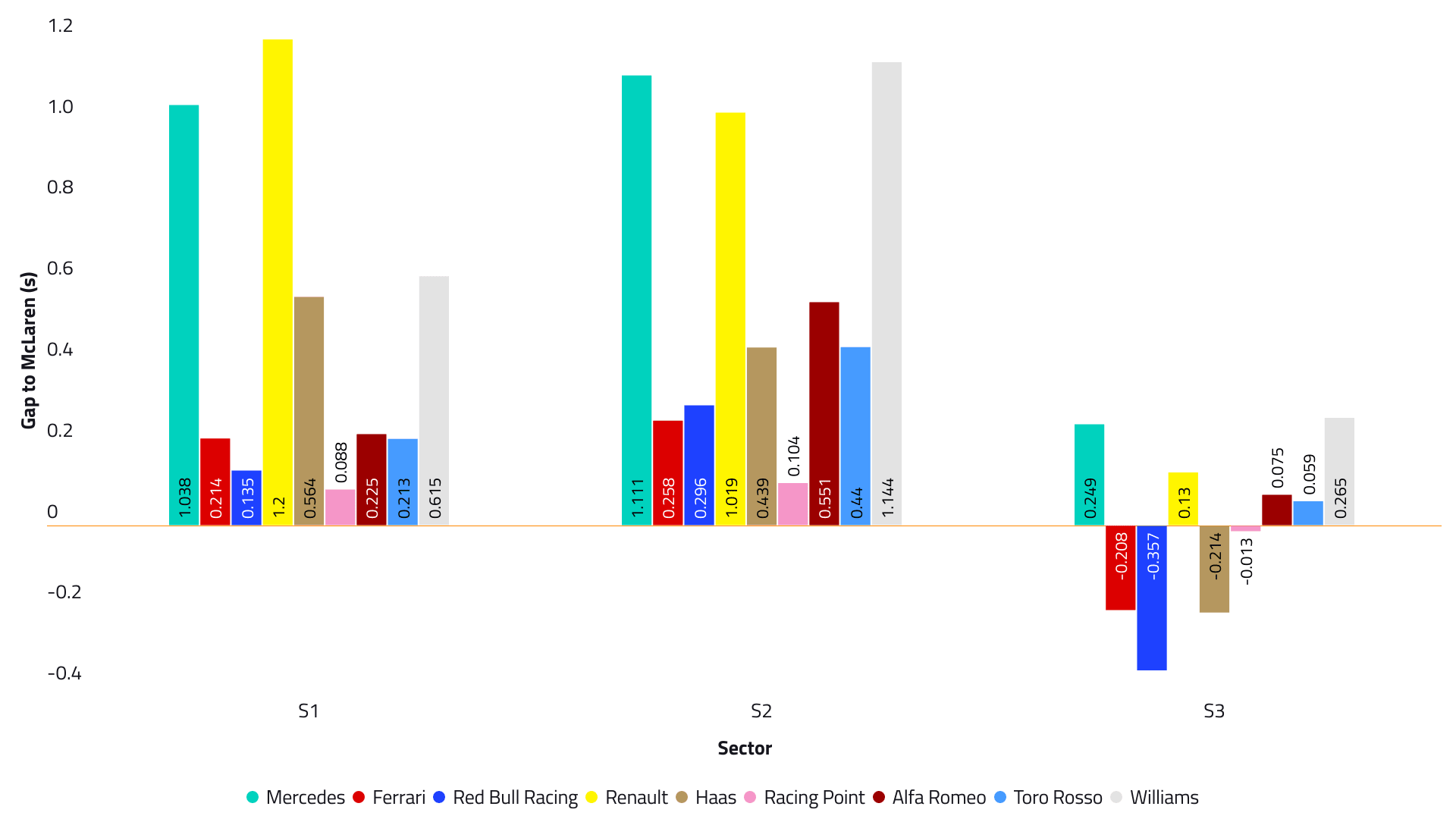
McLaren lit up the timesheets on Day 1 at Barcelona, with Lando Norris recovering from lost time in the garage in the morning to set the quickest lap of the day. But was the MCL34 the quickest overall?
Well, looking at the three best sectors set by each team (not necessarily from the same lap or same driver), McLaren’s Norris set the pace in the first two sectors, but it was Red Bull’s Pierre Gasly who showed the greatest turn of speed in the slower final sector of the lap.
However, it’s worth noting that Norris’ headline time was set on the C4 tyres, whereas Pierre Gasly’s second best time, which was only 0.006s slower, was set on the C3, which according to Pirelli is around 0.6s slower.
The 10 teams were much more closely-matched in the final sector, separated by just over seven-tenths, whereas in the first and second sectors, around 1.1s separated the field.
Once again, there was a real mix of programmes in action, with several teams – including Mercedes – testing out their update packages as they look to refine their spec for the opening race of the season in Melbourne.
Ferrari pile up the mileage
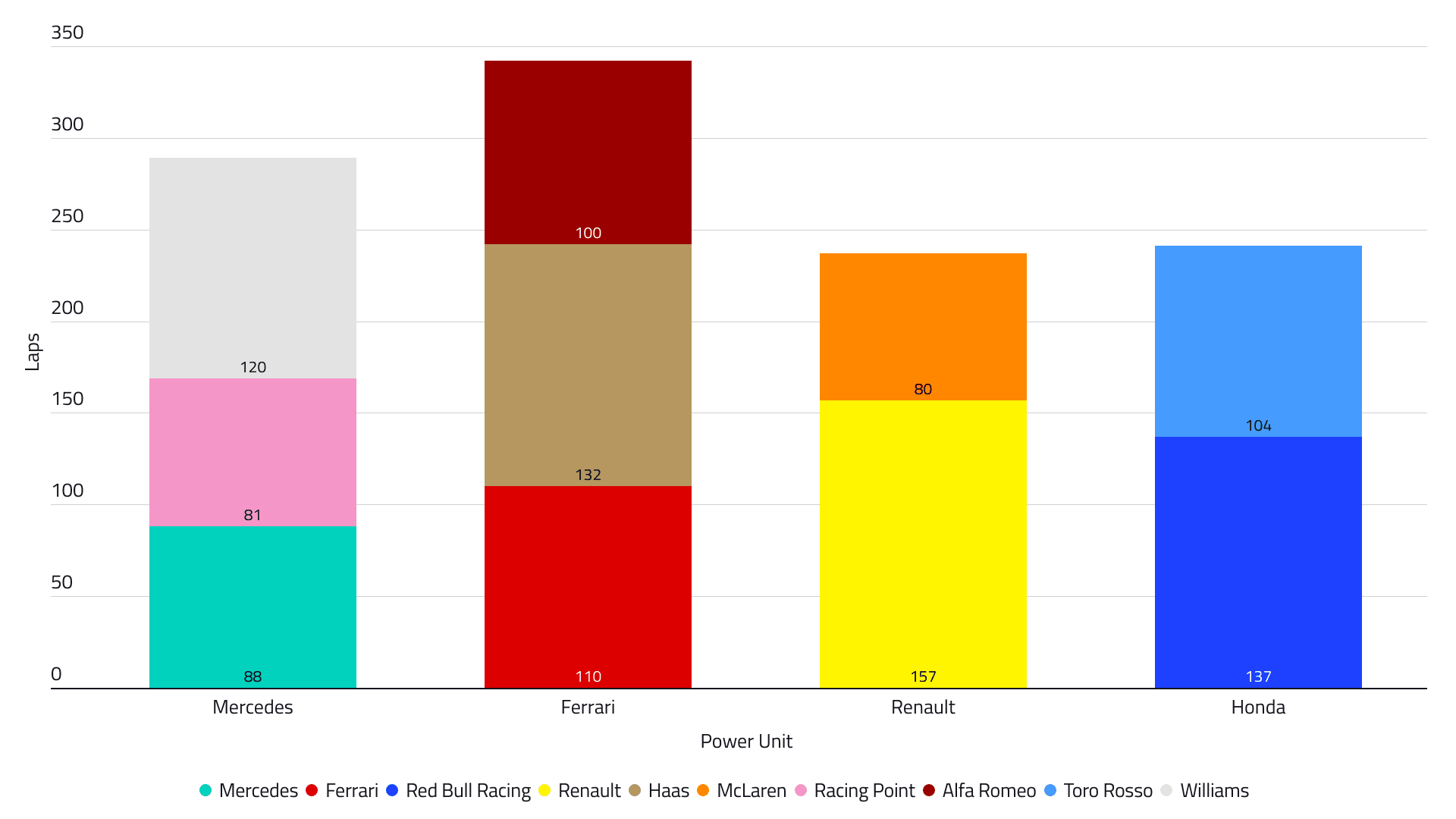
Not for the first time during testing, Ferrari topped the tables when it comes to overall engine mileage, with the works team and customers Alfa Romeo and Haas clocking up nearly 350 laps.
Mercedes were next up, with customer Williams recovering some ground lost last week - after their car arrived late to Barcelona – with an encouraging 120 laps of running. That left Renault and Honda evenly matched, with the Japanese manufacturer edging ahead by just four laps.
Reliability wasn’t as strong on day one of testing, but that isn’t unusual given teams will now be turning things up and pushing their packages harder as they search for more performance while also trying to iron out any final reliability niggles before the season kicks off.
Renault on song in the speed trap
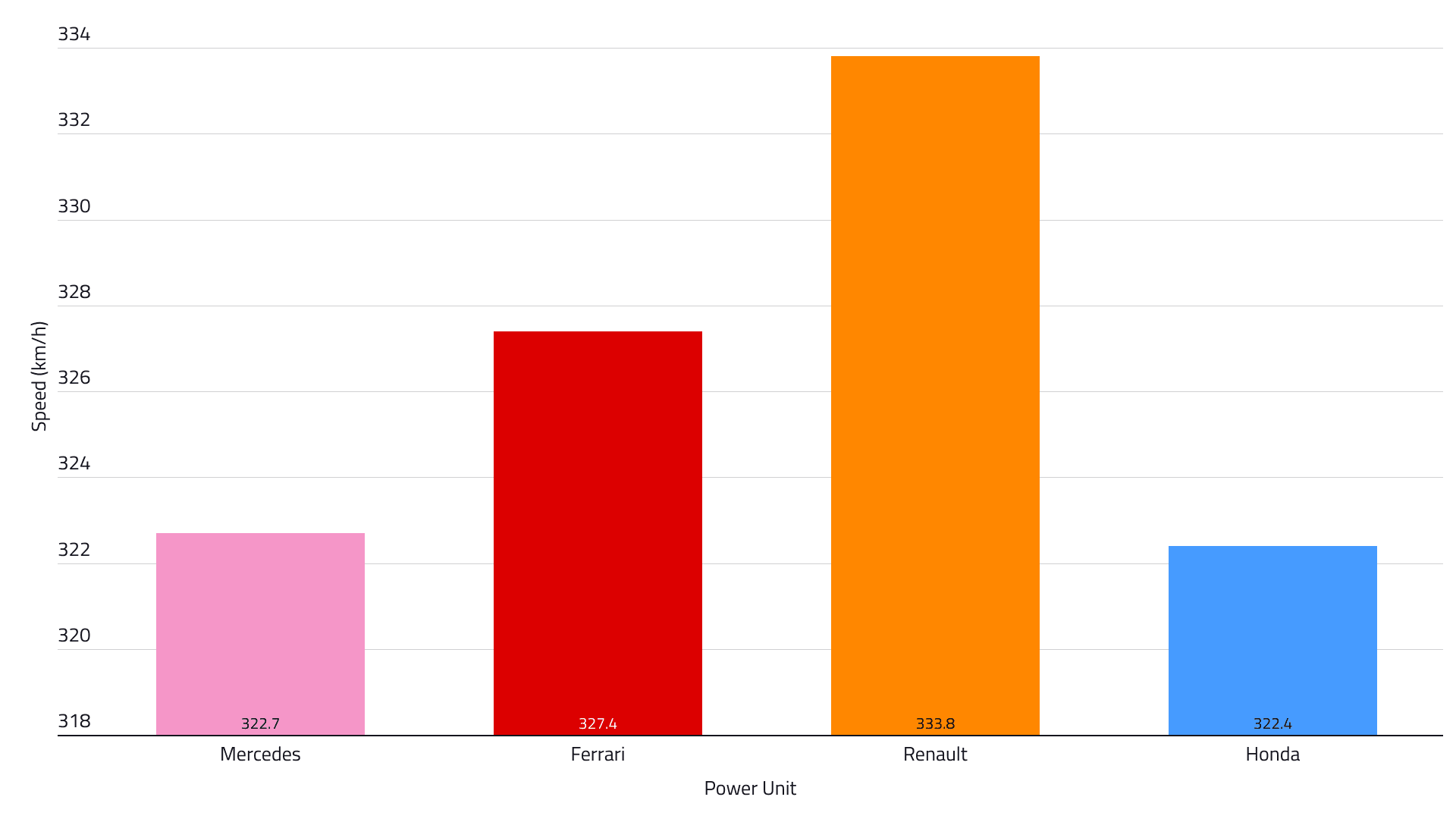
There was quite a dramatic difference in the top speeds through the speed trap on day one, with Renault topping the pile on 333.8km/h, which was 6.4km/h quicker than closest challenger Ferrari.
Mercedes and Honda were evenly matched, around 11km/h slower than Renault - however it remains unclear how much wing cars using those power units were running.
It’s also likely that the engine manufacturers have yet to fully turn up their engines yet nor refine their Melbourne specifications, so expect some more impressive speeds as the week goes on.
Top teams hit problems
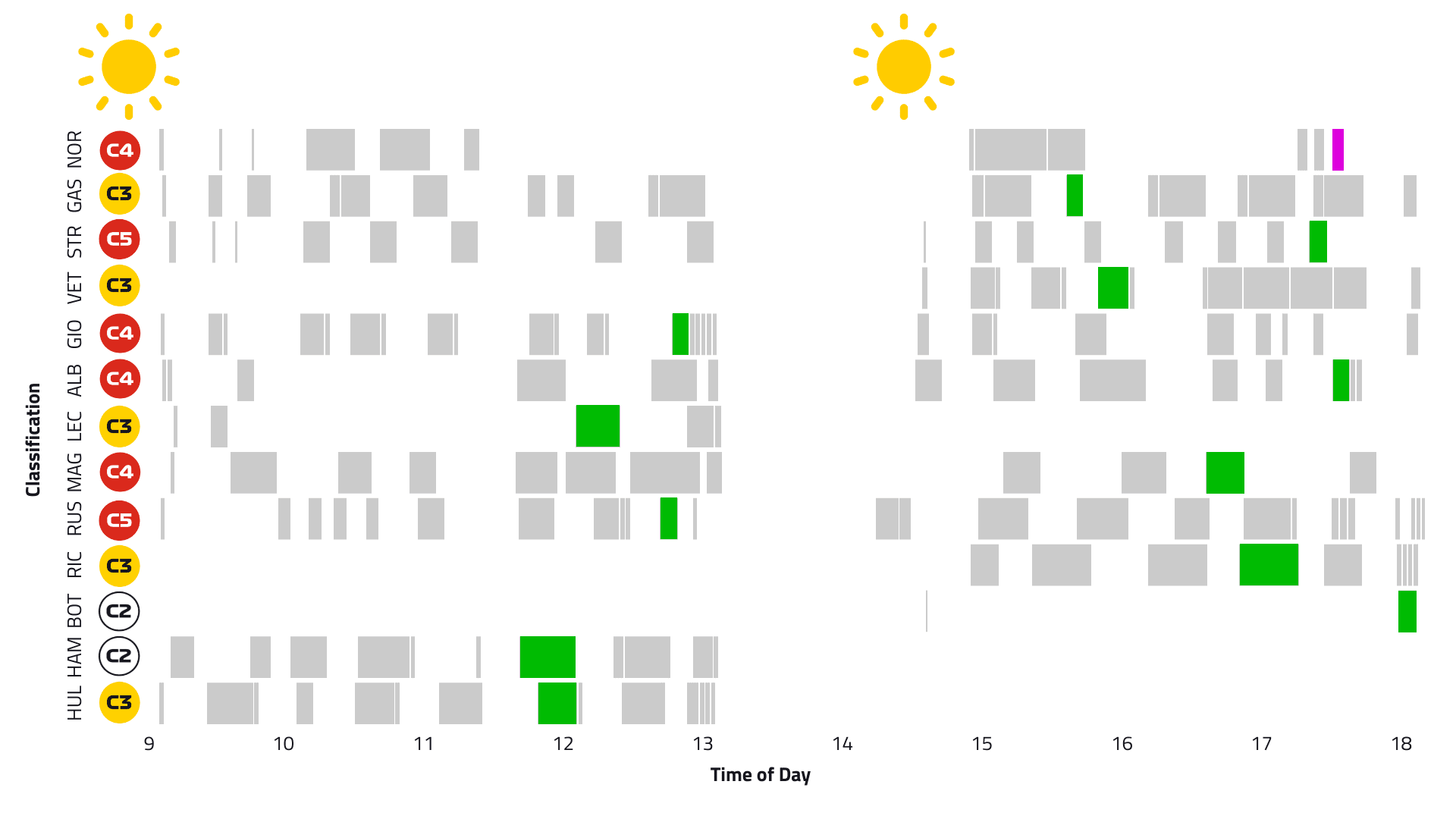
Ferrari and Mercedes have enjoyed a largely trouble-free pre-season test so far, but they both hit problems on day one of the second test. Charles Leclerc spent much of the morning in the garage as his Ferrari team carried out checks on the cooling system.
A few garages up, Valtteri Bottas’ running was severely hampered when Mercedes encountered an oil pressure problem that stopped the car on track. They opted to change the engine to allow him to get back out and for further analysis – but that meant some extended garage time.
However, their respective team mates Sebastian Vettel and Lewis Hamilton – who split the running – had more straightforward sessions, with both completing a series of mostly untroubled runs. Vettel, as the graph shows, managed a three-stop race simulation in the afternoon, having previously set his best time of the day on his fourth run.
Norris’ top time was set at the end of the day, on the third of three very short runs. A combination of tyres were used by the drivers and if you were to adjust the times based on tyre compounds, Vettel would have set the quickest lap, ahead of team mate Leclerc, which only further backs up the case that Ferrari are emerging as the team to beat so far.
Elsewhere, there was better news for Williams, with the team clocking 119 laps with George Russell behind the wheel. Not only was it important for the rookie to get some mileage, but also for the team to build up a data bank after last week’s lost running.
You can see from the graph that they started with a series of short runs, gradually increasing the stint length as the day wore on. Those were carried out on high and low fuel loads across a variety of tyres, which only confirms the notion that it’s notoriously difficult to make comparisons because teams are doing such different programmes.
Plenty, then, to look forward to in the final three days of testing, with a clearer picture hopefully set to emerge...
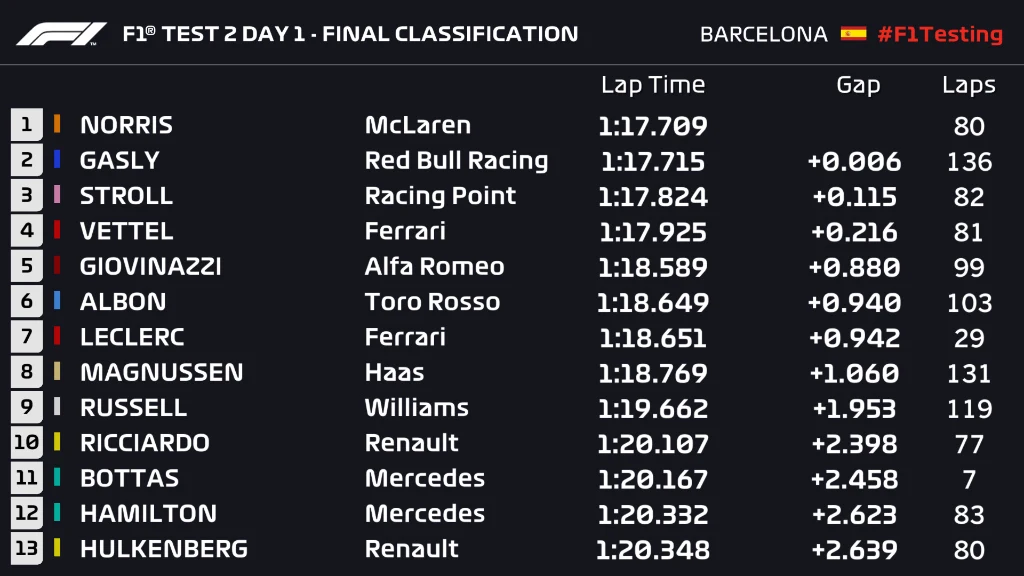
Next Up
Related Articles
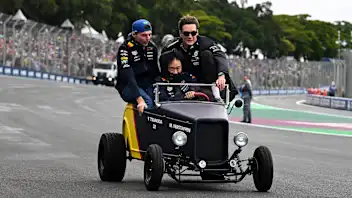 Best radio and more – F1's 2025 alternative awards
Best radio and more – F1's 2025 alternative awards .webp) Unlocked‘We have a lot of hopes’ – Vasseur on Ferrari's 2026
Unlocked‘We have a lot of hopes’ – Vasseur on Ferrari's 2026.webp) End Of Year Reports 2025Ferrari’s best and worst moments from 2025
End Of Year Reports 2025Ferrari’s best and worst moments from 2025.webp) 7 things to be excited for in the 2026 F1 season
7 things to be excited for in the 2026 F1 season End Of Year Reports 2025McLaren’s best and worst moments from 2025
End Of Year Reports 2025McLaren’s best and worst moments from 2025 Who are the 2026 F1 drivers?
Who are the 2026 F1 drivers?
